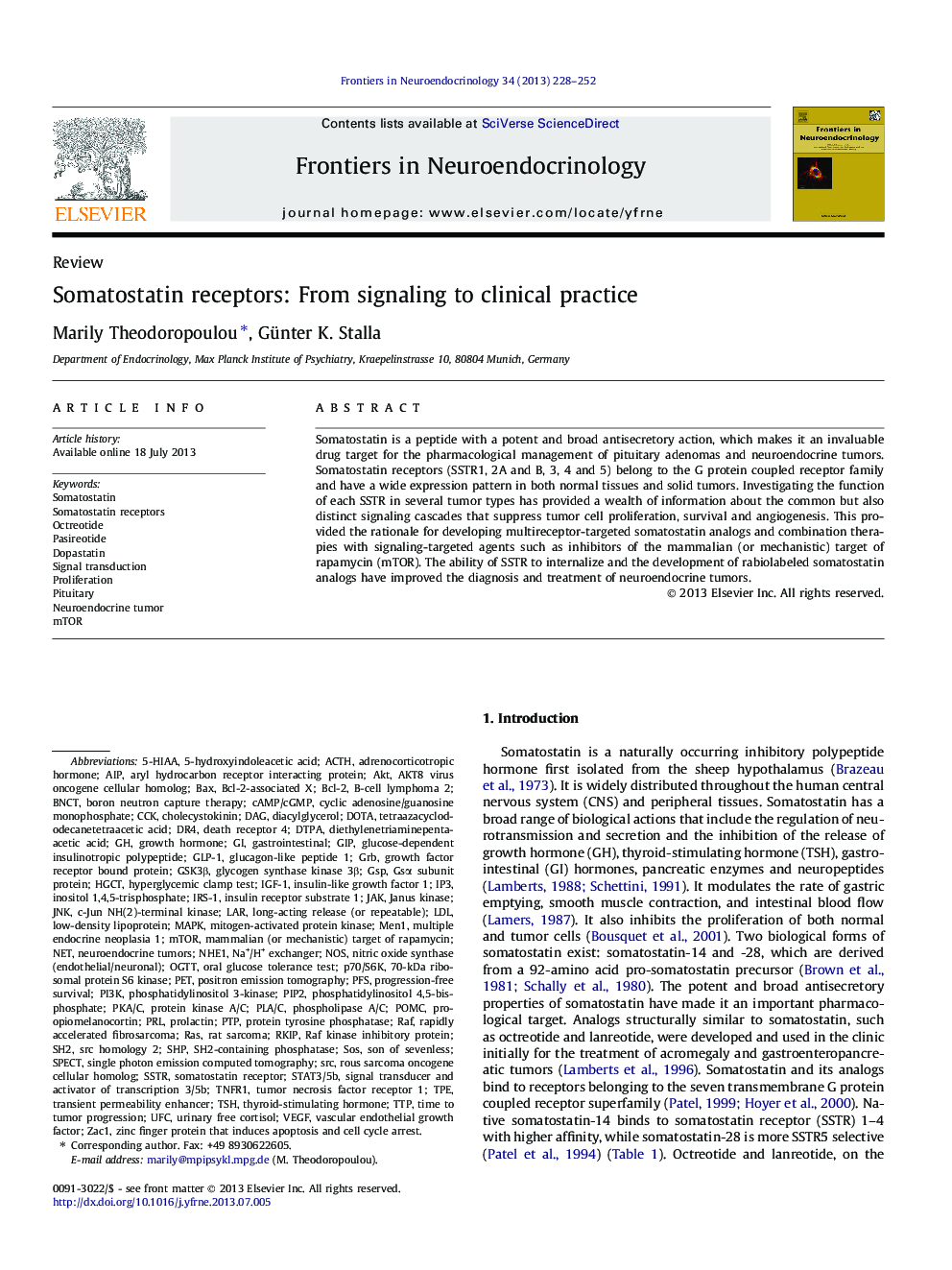| کد مقاله | کد نشریه | سال انتشار | مقاله انگلیسی | نسخه تمام متن |
|---|---|---|---|---|
| 2799340 | 1155970 | 2013 | 25 صفحه PDF | دانلود رایگان |

• Somatostatin is a wide-range antisecretory peptide that binds to five receptors (SSTR1–5).
• SSTR1, 2, 3 and 5 exert their antiproliferative actions and SSTR4 its pro-proliferative action through unique pathways.
• SSTR2 targeting sensitizes tumor cells to antitumor activity of mammalian target of rapamycin (mTOR) inhibitors.
• Co-targeting of SSTR1, 2, 3 and 5 and dopamine receptor type 2 (D2DR) yields potent therapeutic outcomes.
• SSTR signaling factors are putative biomarkers of somatostatin analog response.
Somatostatin is a peptide with a potent and broad antisecretory action, which makes it an invaluable drug target for the pharmacological management of pituitary adenomas and neuroendocrine tumors. Somatostatin receptors (SSTR1, 2A and B, 3, 4 and 5) belong to the G protein coupled receptor family and have a wide expression pattern in both normal tissues and solid tumors. Investigating the function of each SSTR in several tumor types has provided a wealth of information about the common but also distinct signaling cascades that suppress tumor cell proliferation, survival and angiogenesis. This provided the rationale for developing multireceptor-targeted somatostatin analogs and combination therapies with signaling-targeted agents such as inhibitors of the mammalian (or mechanistic) target of rapamycin (mTOR). The ability of SSTR to internalize and the development of rabiolabeled somatostatin analogs have improved the diagnosis and treatment of neuroendocrine tumors.
Journal: Frontiers in Neuroendocrinology - Volume 34, Issue 3, August 2013, Pages 228–252